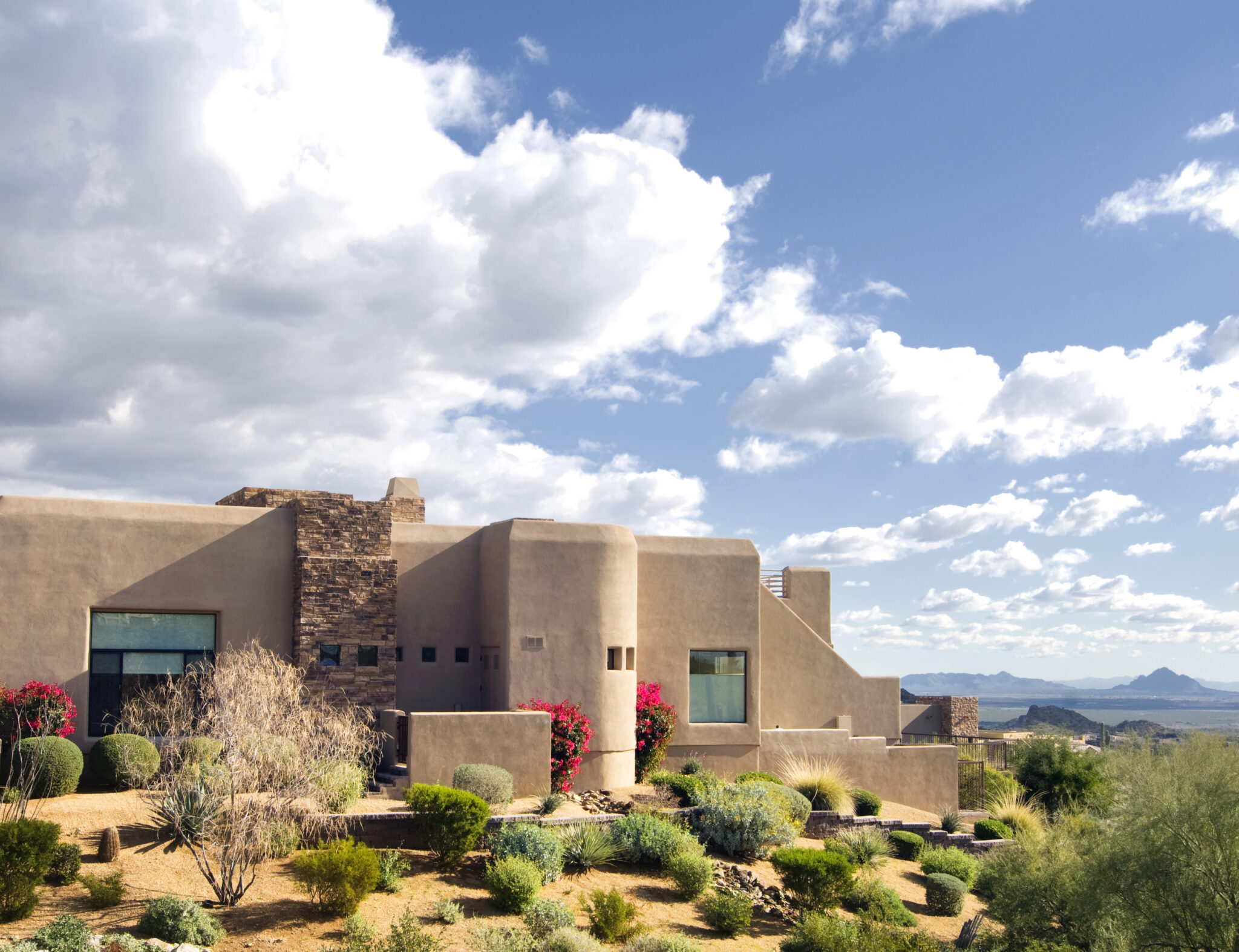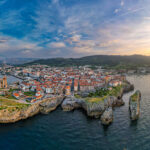Designing luxury homes in extreme climates—whether it’s scorching desert heat, freezing winters, or storm-prone coastal areas—requires careful consideration of weather conditions and how they affect the home’s functionality, comfort, and longevity. The key to successful design in these environments is integrating advanced technologies, resilient materials, and intelligent planning to ensure the home remains a sanctuary in the face of harsh weather. Here are the top strategies for designing luxury homes in extreme climates:
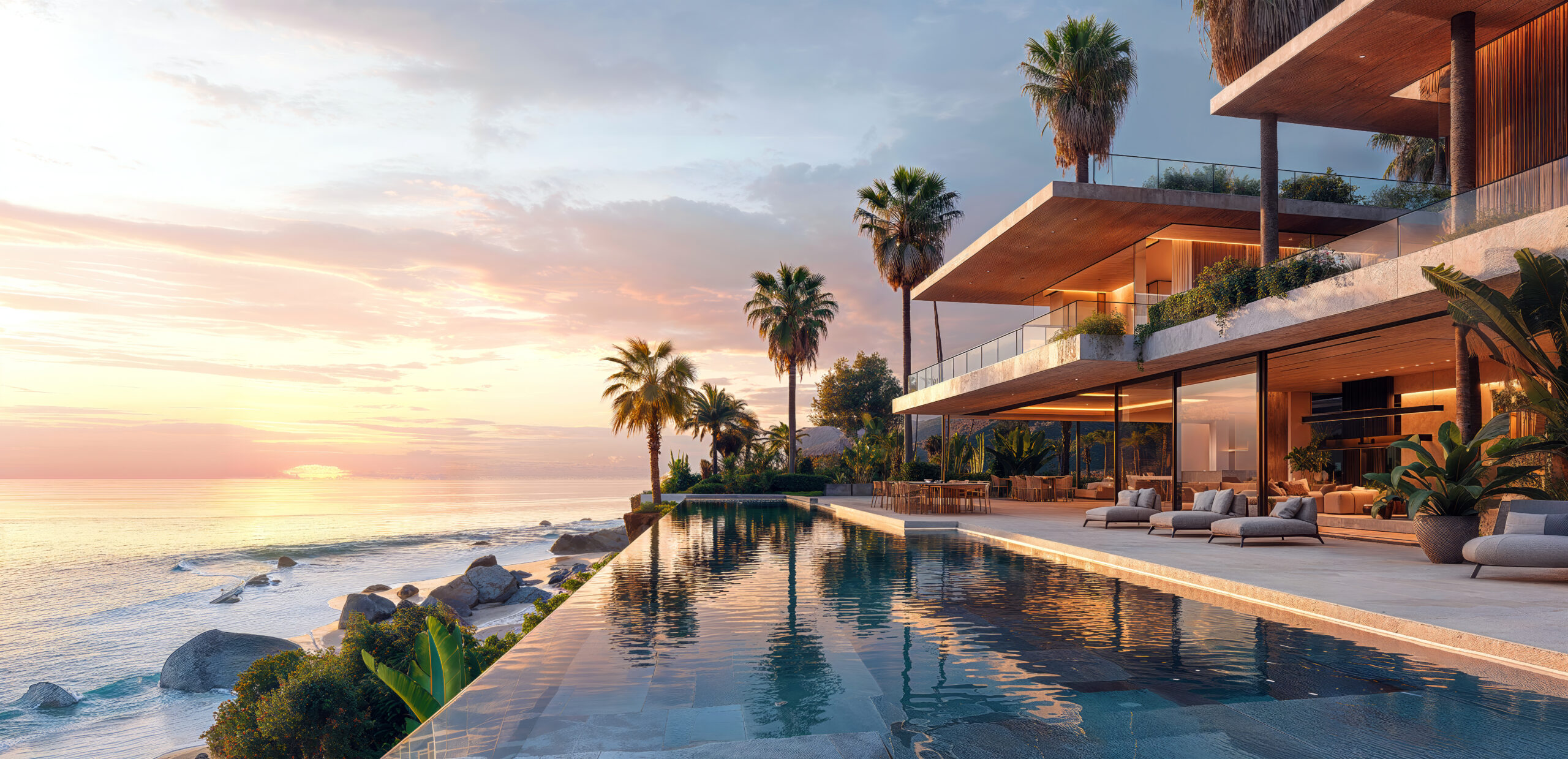
Temperature Control and Insulation
Efficient Insulation Systems: In both hot and cold climates, insulation plays a critical role in maintaining a comfortable indoor temperature. For cold climates, high-performance insulation materials like spray foam or cellulose can help retain warmth inside. In hot climates, reflective or radiant barriers, in addition to high-quality insulation, can help keep the interior cool by preventing heat from entering.
Thermal Mass: In desert or arid environments, materials with high thermal mass, like stone or concrete, can absorb heat during the day and release it during cooler nights, stabilizing indoor temperatures and reducing the need for energy-intensive cooling systems.
Advanced HVAC Systems: High-end homes in extreme climates often feature custom HVAC systems with multiple zones, smart thermostats, and even integrated radiant floor heating (for cold climates) or cooling systems (for hot climates). Geothermal heating and cooling systems are an environmentally friendly and energy-efficient option for regulating temperature in challenging environments.
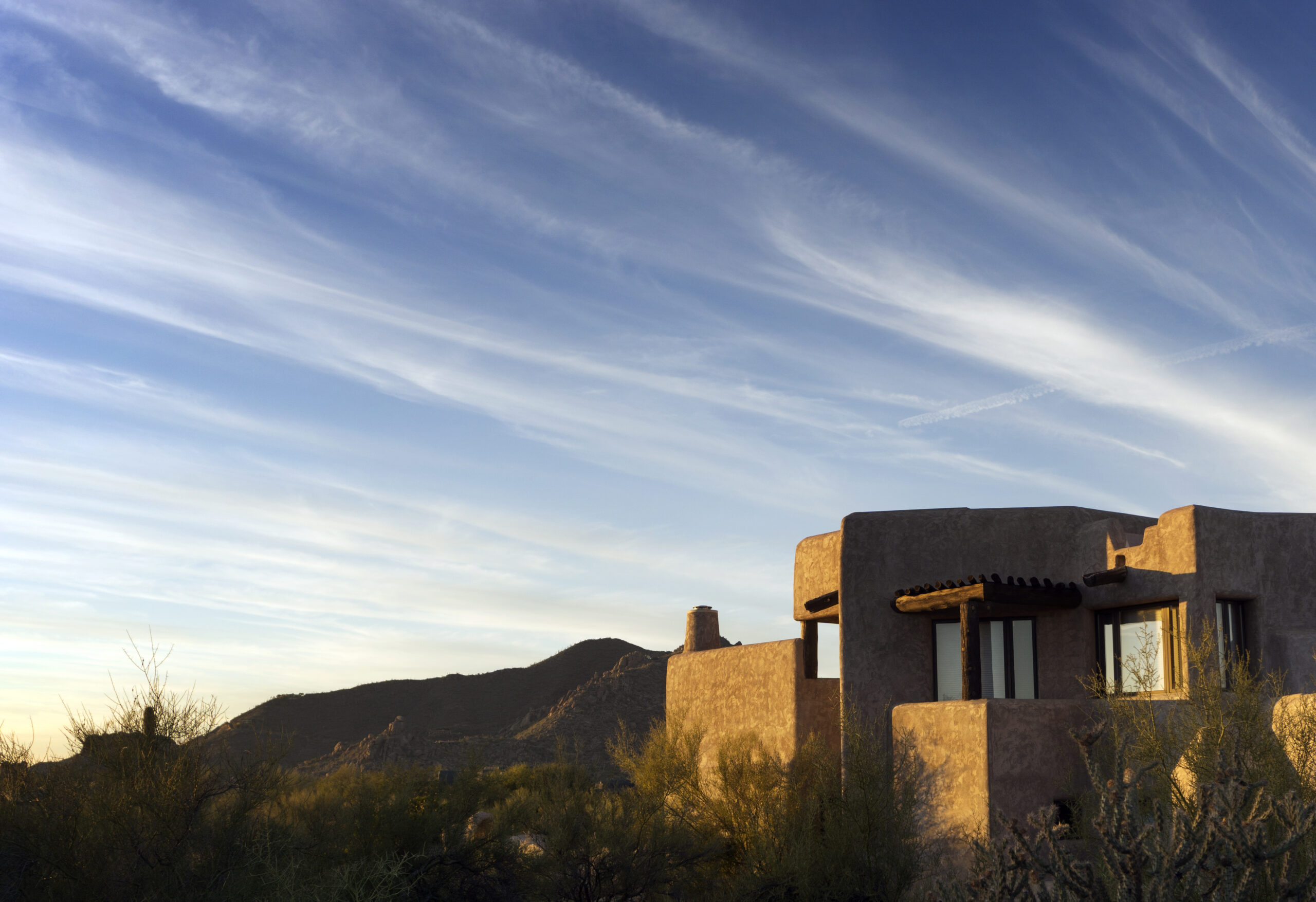
Protective and Resilient Materials
Weather-Resistant Materials: For luxury homes in extreme climates, choosing durable, weather-resistant materials is essential. For hot climates, materials such as stucco, adobe, or concrete provide both insulation and resistance to the sun’s intense rays. In colder climates, materials like stone, brick, and steel offer both aesthetic appeal and strength against harsh winds and snow.
Corrosion-Resistant Finishes: In coastal areas or places with high humidity, materials and finishes that resist corrosion, such as stainless steel or aluminum, should be used for hardware, railings, and exterior elements. Wood can be treated with protective coatings to prevent rot and fading, ensuring the home stays beautiful for years.
Impact-Resistant Windows: In storm-prone areas, impact-resistant glass or hurricane-rated windows are critical. These windows not only protect from flying debris during high winds but also offer superior insulation, energy efficiency, and soundproofing, enhancing both safety and luxury.
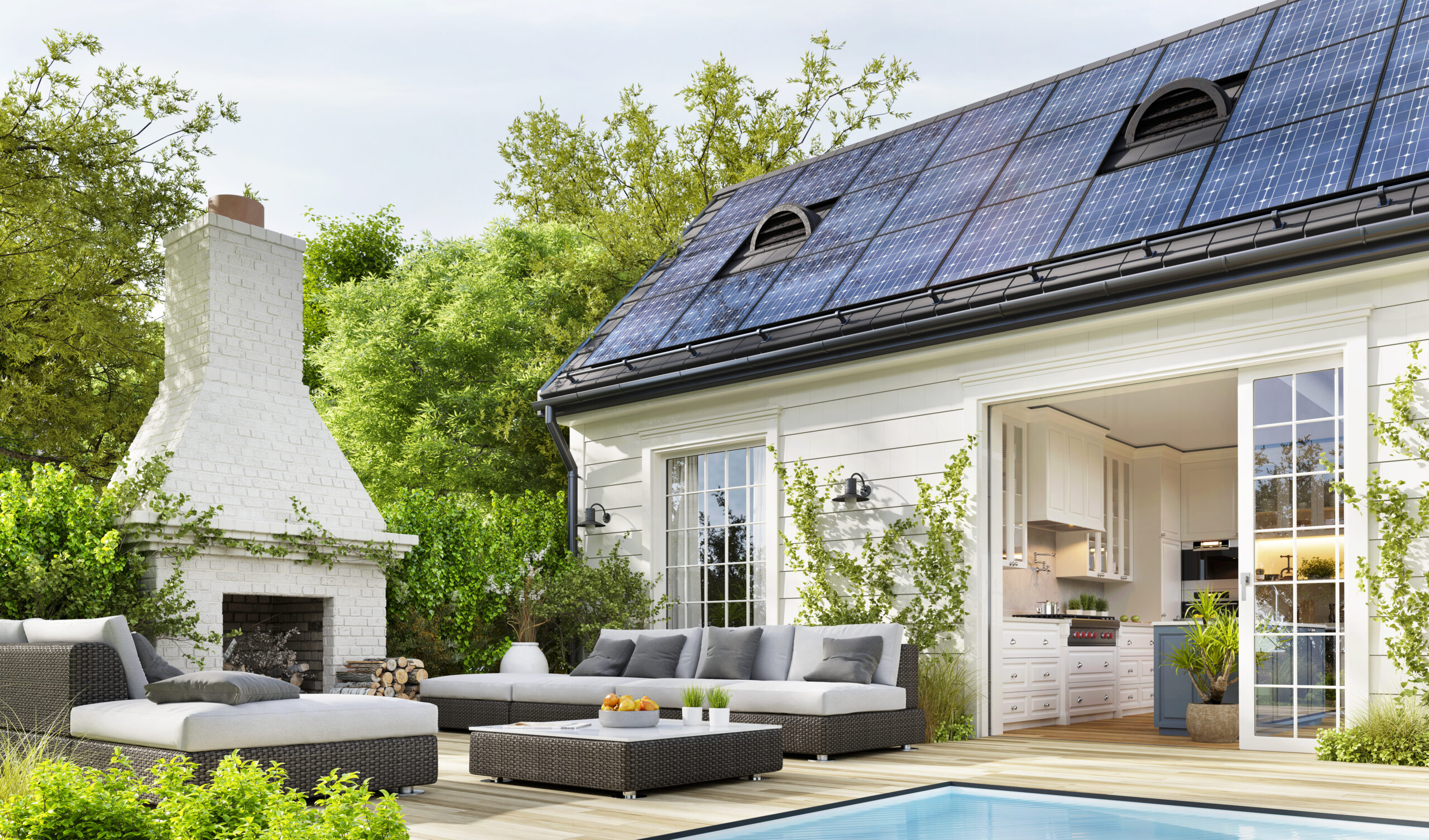
Energy Efficiency and Sustainability
Solar Power and Energy Solutions: Luxury homes in extreme climates often rely on renewable energy solutions like solar panels. In sunny climates, solar energy systems can provide significant energy savings and even power the entire home. In colder areas, solar panels can help offset heating costs, particularly when paired with passive solar design.
Rainwater Harvesting and Water Conservation: In arid climates, water conservation becomes a key consideration. Installing a rainwater harvesting system to collect and reuse rainwater for irrigation and even interior use (after filtration) can help reduce water consumption. High-end homes can also incorporate drought-tolerant landscaping, xeriscaping, and smart irrigation systems that reduce water use while maintaining lush outdoor spaces.
Energy-Efficient Appliances and Systems: Luxury homes designed for extreme climates often include high-efficiency appliances, LED lighting, and low-flow plumbing fixtures to reduce overall energy and water consumption. Smart home systems can automatically adjust lighting, temperature, and water use based on occupancy, further improving efficiency.
Designing for Natural Light and Ventilation
Orientation for Sunlight: In extreme climates, maximizing or minimizing sunlight is crucial. In cold environments, strategically orienting the home to face the sun allows for passive solar heating, while overhangs or shading devices prevent excessive heat gain in the summer months. In desert climates, deep roof overhangs or pergolas can provide shade while also allowing for cooling breezes.
Cross-Ventilation: In hot or humid climates, passive ventilation techniques such as cross-ventilation can help cool the home naturally. Designing the home with windows placed to catch prevailing winds can reduce reliance on air conditioning. For extreme heat, incorporating large sliding glass doors or open terraces can further enhance airflow.
Skylights and Clerestory Windows: Natural light is essential for creating an open, airy atmosphere. Using skylights and clerestory windows allows daylight to flood the interior, reducing the need for artificial lighting during the day. These features also allow for improved airflow, keeping interiors fresh in even the most challenging climates.
Building for Storm Protection and Disaster Resilience
Structural Reinforcements for Winds: In hurricane-prone areas, luxury homes need to be designed to withstand high winds. Structural reinforcements such as reinforced concrete foundations, wind-resistant roofs, and steel framing ensure that the home remains secure. Rooflines may be designed to shed wind, and windows are often recessed or protected with storm shutters to reduce the risk of damage.
Flood-Proofing and Elevated Foundations: For homes in flood-prone or coastal areas, elevated foundations and flood-resistant materials can prevent water damage. Raised piers or stilts can keep the living spaces above potential flood levels, while flood gates or sump pumps may be installed to prevent water from entering the home.
Earthquake-Proofing: In regions prone to earthquakes, luxury homes can be engineered with seismic considerations, such as flexible foundations, shock absorbers, and reinforced frames, to protect against shifting ground.
Creating Comfortable Outdoor Spaces
Outdoor Rooms and Sheltered Spaces: In extreme climates, outdoor living areas should be both comfortable and functional. Design patios, terraces, and lounges with built-in shading (e.g., retractable awnings, pergolas, or covered decks) to protect from the sun, rain, or snow. In colder climates, consider installing outdoor fireplaces, fire pits, or heated patios to create cozy, year-round outdoor living spaces.
Windbreaks and Privacy Screens: In areas where wind is a concern, strategic landscaping such as tall hedges, fencing, or rock walls can help block harsh winds, creating a protected, tranquil outdoor environment. For privacy, these elements can also act as barriers to neighboring properties, further enhancing the luxury of outdoor living.
Integrating Local Culture and Architecture
Cultural in Design: In extreme climates, luxury homes should reflect the culture and history of the region. For example, in desert climates, incorporating adobe or natural earth tones can tie the home to its surroundings, while in alpine regions, steep rooflines and timber accents can reflect traditional mountain architecture.
Landscaping in Harmony with Nature: High-end homes in extreme climates should feature landscaping that works with the natural environment. For example, drought-resistant plants and native species in arid regions can complement the harsh surroundings, while in cold climates, evergreen trees and hardy plants can add greenery even in the winter months.
Designing luxury homes in extreme climates is about more than just aesthetics; it requires creating a comfortable, resilient, and energy-efficient space that can withstand harsh environmental conditions. By focusing on thoughtful materials, energy efficiency, smart design choices, and innovative technologies, these homes can offer the ultimate comfort and luxury, no matter the weather outside.

